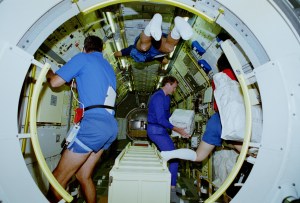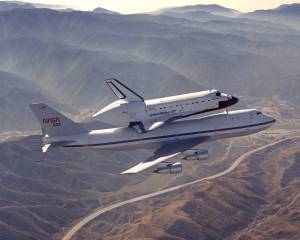
A few days before they left Skylab on Feb. 8, 1974, the final crew to occupy the station raised its altitude, hoping to keep it in orbit until a future space shuttle could revisit it. But higher than predicted solar activity caused the Earth’s atmosphere to expand, increasing drag on the large vehicle, causing its orbit to decay faster than expected. In 1978, controllers reactivated the station and changed its attitude, hoping to keep it in orbit as long as possible by reducing atmospheric drag. In the meantime, delays in the space shuttle’s development eventually made it impossible for a shuttle to revisit Skylab before it reentered the Earth’s atmosphere. On July 11, 1979, Skylab reentered, with debris landing over the Indian Ocean and Australia. Lessons learned from deorbiting large spacecraft like Skylab and others will inform the eventual deorbiting of the International Space Station.
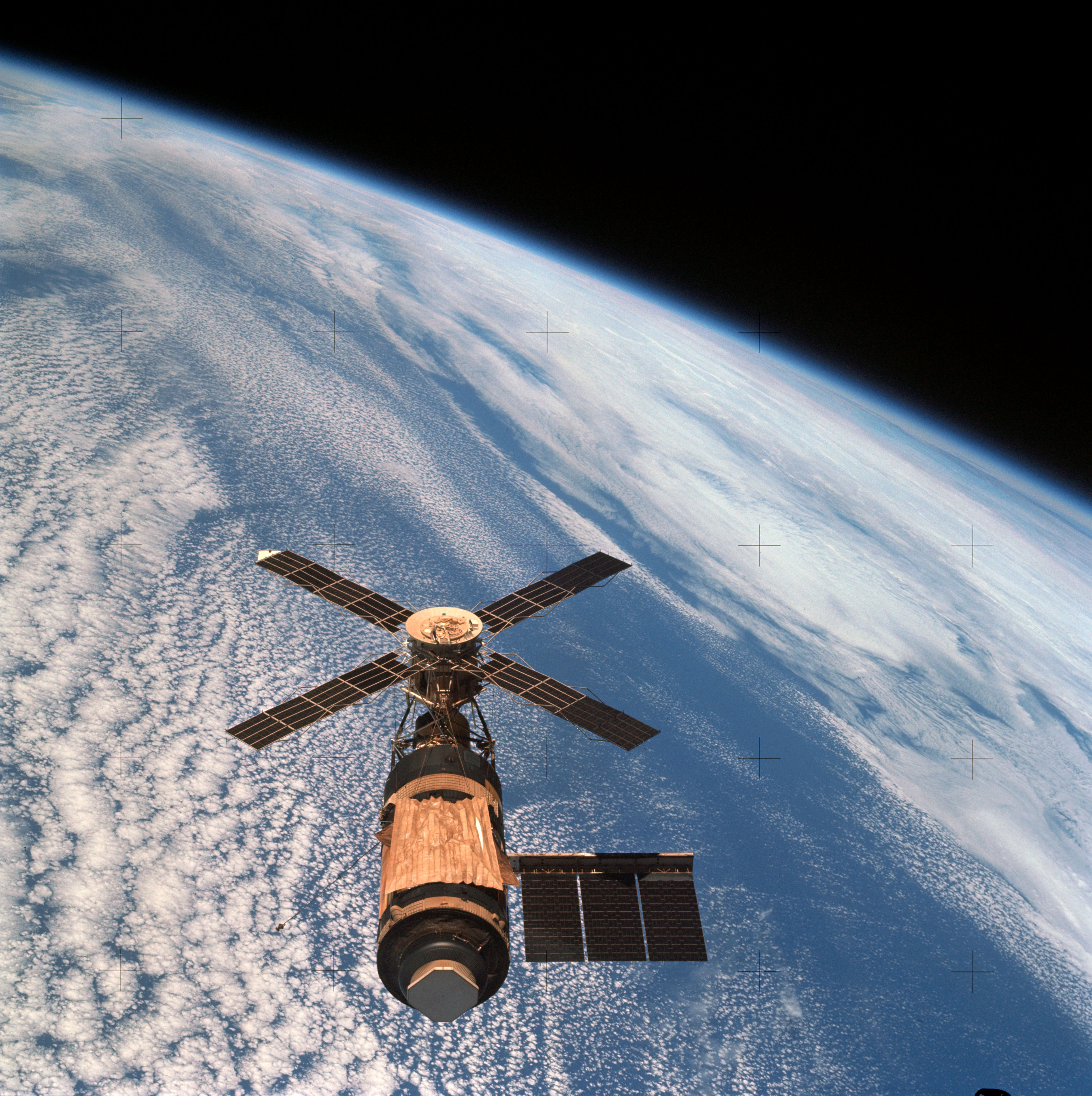

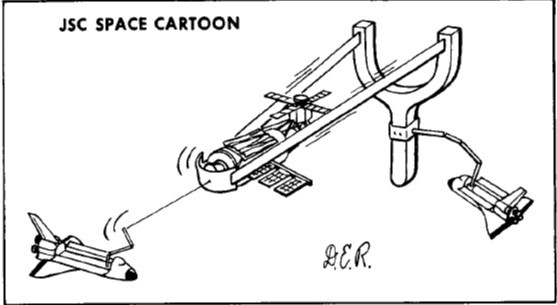
Left: Skylab as it appeared to the final crew upon its departure. Middle: Illustration of a proposed Skylab boost mission by the space shuttle. Right: A more whimsical depiction of the Skylab reboost by the space shuttle, as drawn by a cartoonist at NASA’s Johnson Space Center in Houston.
When the Skylab 4 astronauts departed the station on Feb. 8, 1974, they left it in a 269-by-283-mile orbit. Just one day after the crew left the station, operators in the Mission Control Center at NASA’s Johnson Space Center in Houston ran a few final systems checks, oriented Skylab in a gravity-gradient attitude – meaning the heavier workshop faced the Earth – vented its atmosphere, and turned off its power. In this attitude, and based on predictions of the Sun’s activity in the upcoming solar cycle that would increase atmospheric drag and reduce Skylab’s altitude, scientists estimated that the station would remain in orbit until March 1983. However, the solar cycle intensified into the second most active one in a century and atmospheric perturbations shifted Skylab out of the gravity-gradient attitude, increasing its drag. By 1977, revised estimates projected Skylab’s reentry occurring as early as mid-1979. Although the space shuttle had yet to fly, NASA devised a plan for astronauts on one of its early missions to attach a rocket stage to Skylab and use it to either boost the station into a higher storage orbit or deorbit it in a controlled fashion into the Pacific Ocean. At 169,000 pounds, Skylab represented the heaviest spacecraft to reenter up to that time, and engineers believed that some of its components would survive the entry. Keeping the debris away from populated areas remained a priority.
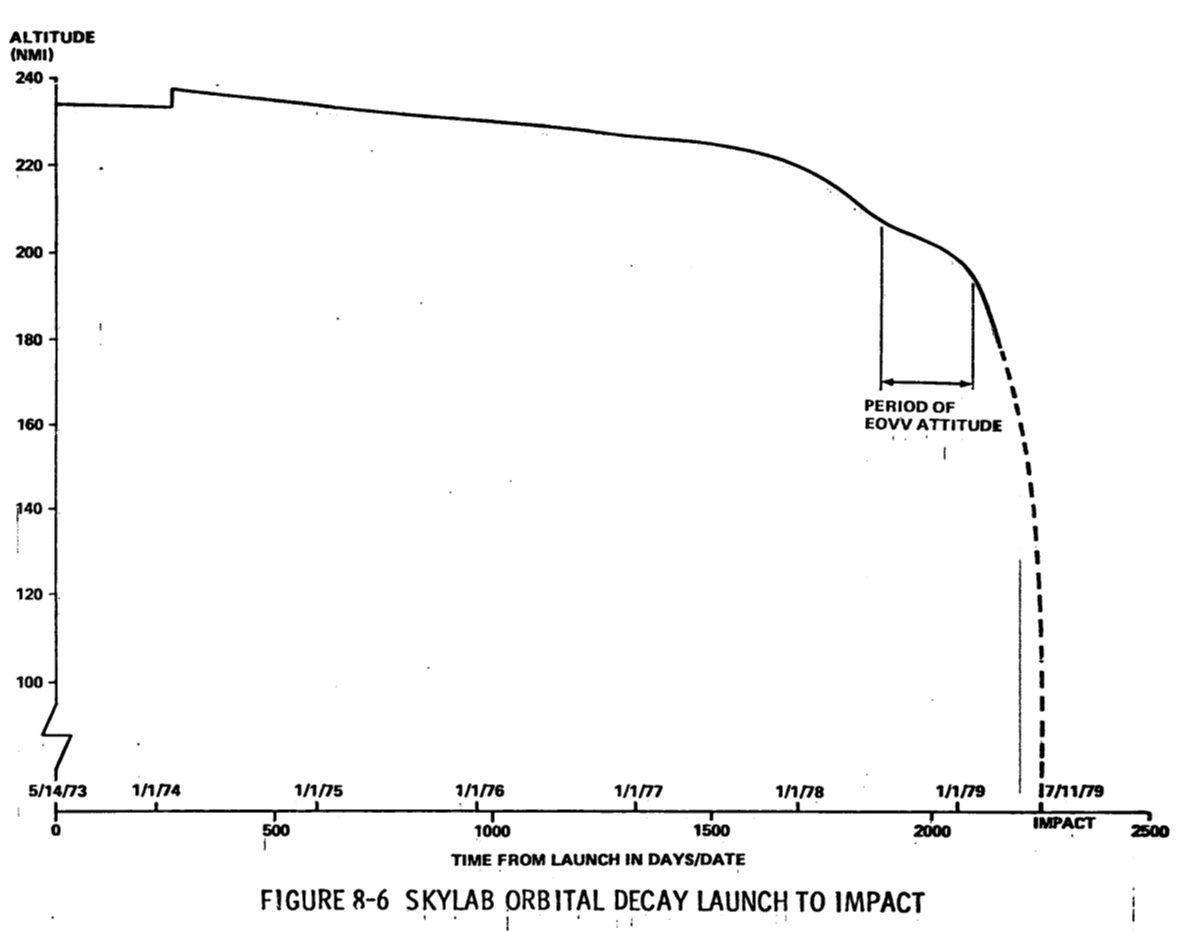
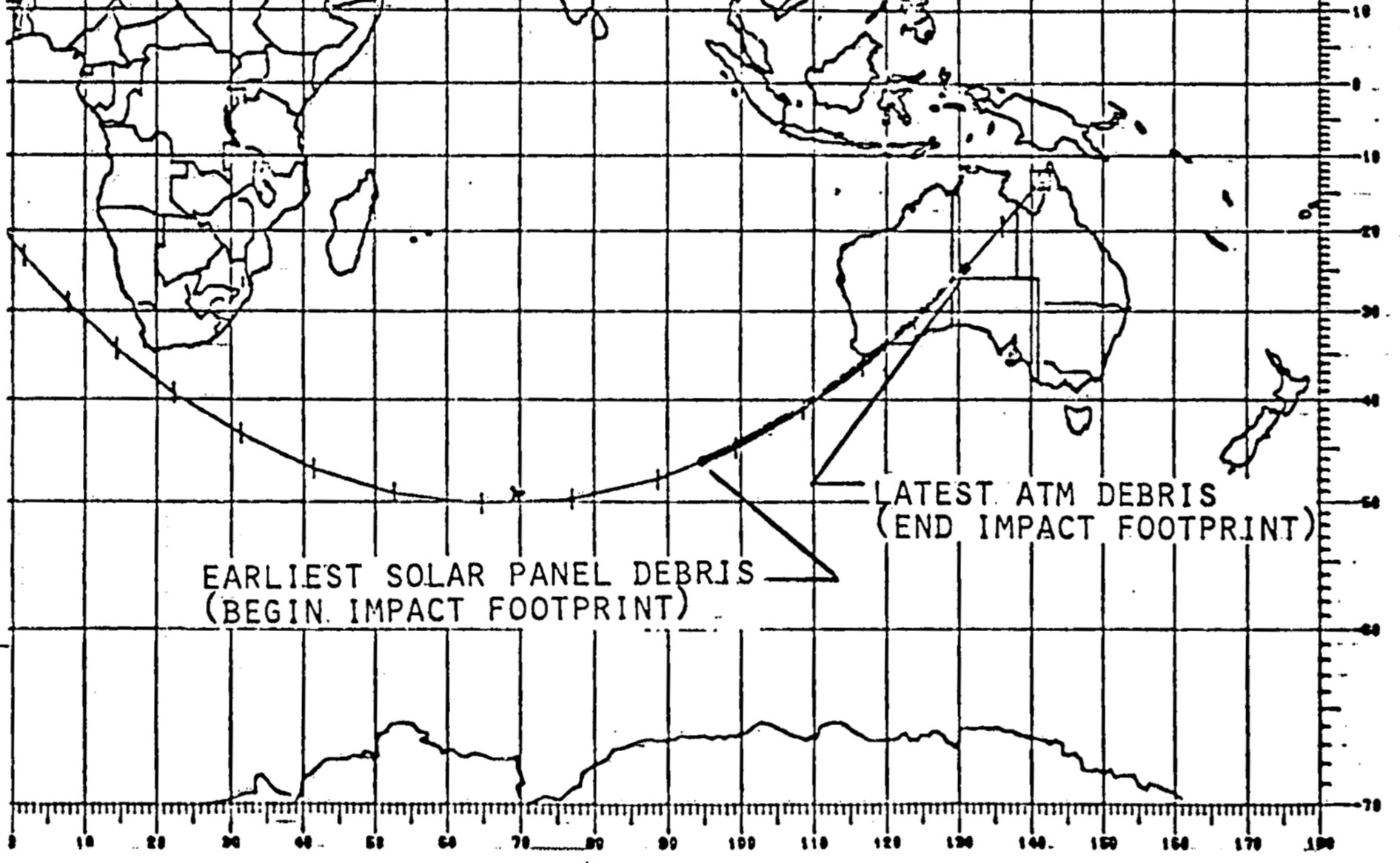
Left: Plot of Skylab’s altitude from launch until reentry. Right: Illustration of the five ground stations used during the reactivation and tracking of Skylab.
To ensure that Skylab stayed aloft long enough for this shuttle mission to reach it, NASA needed to reactivate it. Because Skylab had no ability to reboost itself, its rate of decay could only be slightly controlled by changing the station’s attitude. Between March and June 1978, using the limited communications afforded by five ground stations, a small team of controllers methodically reactivated Skylab after a more than four-year passive period. Remarkably, the station’s systems, including its all-important batteries, had survived the intervening period in good condition. When controllers fully reactivated Skylab on June 11, 1978, its altitude had decreased to 250 miles, and to prolong its life NASA decided to keep the station activated to control its attitude. Using its Thruster Attitude Control System, operators commanded Skylab into an End On Velocity Vector (EOVV) minimum drag attitude, with its forward end pointing in the direction of flight. Skylab remained in the EOVV attitude until Jan. 25, 1979, and engineers estimated that this extended the station’s orbital life by 3.5 months. By late 1978, with slips in the shuttle schedule, saving Skylab seemed no longer feasible. In a Dec. 19, 1978, press conference, NASA’s Associate Administrator for Space Transportation Systems John F. Yardley announced the cancellation of the shuttle reboost mission and the end of efforts to control Skylab’s attitude. Yardley emphasized the low likelihood of an uncontrolled Skylab reentry resulting in debris hitting populated areas, citing the example of the spent second stage of the Saturn V rocket that launched Skylab. That empty stage, larger in size although at 83,000 pounds less massive than Skylab, reentered out of control on Jan. 11, 1975, falling harmlessly into the Atlantic Ocean, about 1,000 miles west of Gibraltar.


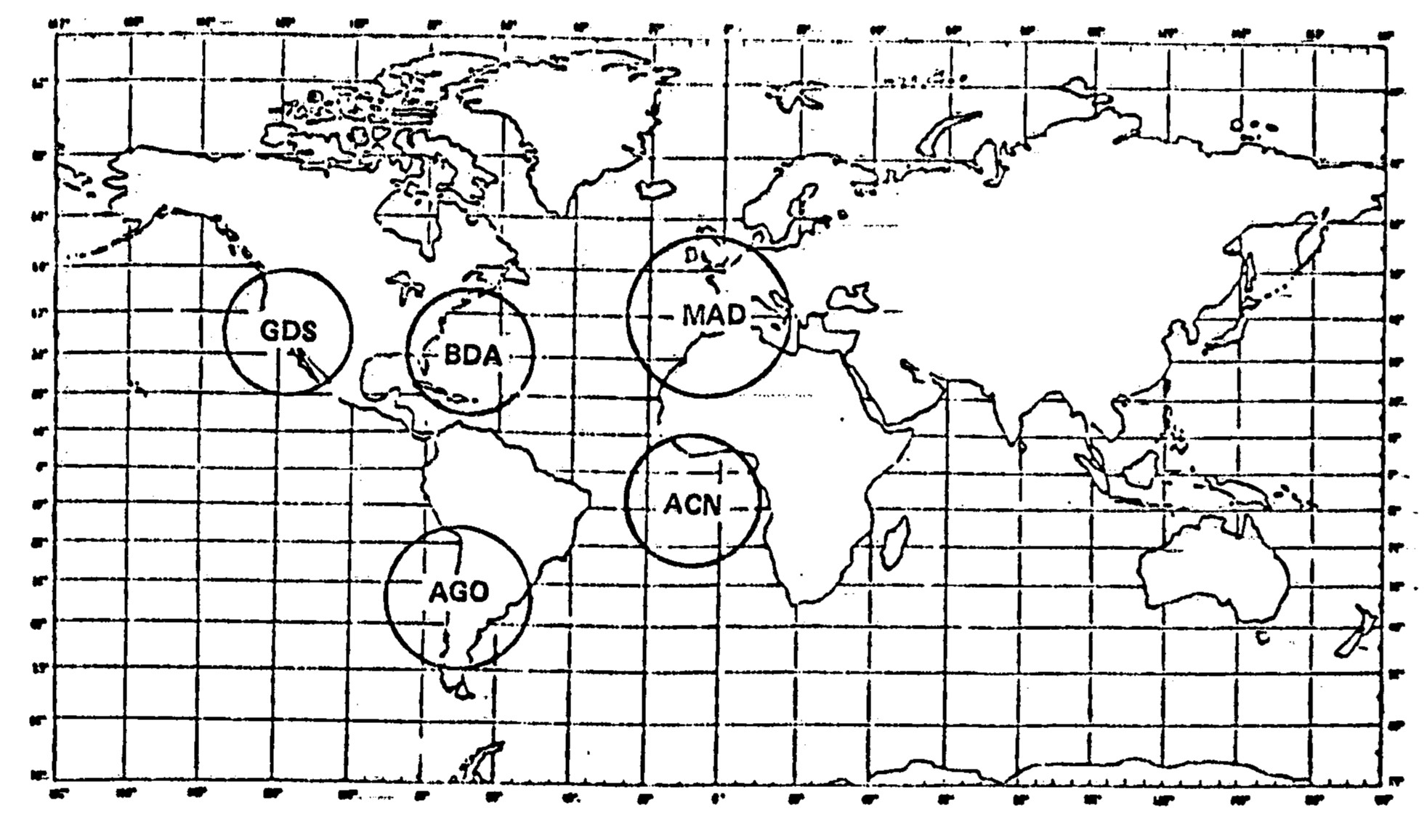
Left: Illustration of Skylab in the End On Velocity Vector minimum drag attitude. Middle: Cartoon of “Skylab is falling” fever. Image credit: courtesy Chicago Tribune. Right: Ground track of Skylab’s final orbit and the debris footprint in the Indian Ocean and Australia.
On Jan. 25, 1979, controllers maneuvered Skylab from EOVV to solar inertial attitude, the orientation it maintained during its operational life, to ensure its solar arrays remained pointed at the Sun to keep the station’s batteries charged. Studies indicated that as Skylab descended below 161 miles, aerodynamic torques would make it difficult to maintain the solar inertial attitude. On June 20, with Skylab at 163 miles, controllers commanded it into a high-drag Torque Equilibrium Attitude (TEA). This gave controllers the ability to select the best orbit to execute the final reentry, one that overflew mostly water to minimize any potential harm to people and property. Orbit 34,981 on July 11 met those criteria. On that orbit, after Skylab passed over North America, it flew southeast over the Atlantic Ocean, round the southern tip of Africa, then northeast across the Indian Ocean before passing over the next major landmass, mainly sparsely populated areas of Australia. On the planned day of reentry, controllers commanded Skylab into a slow tumble at an altitude of 93 miles to better aim the entry point to the east of the southern tip of Africa, causing the breakup over the Indian Ocean. After this point, the ground no longer controlled the station. With a debris footprint possibly 3,500 miles long, some debris landing in Australia remained a possibility.
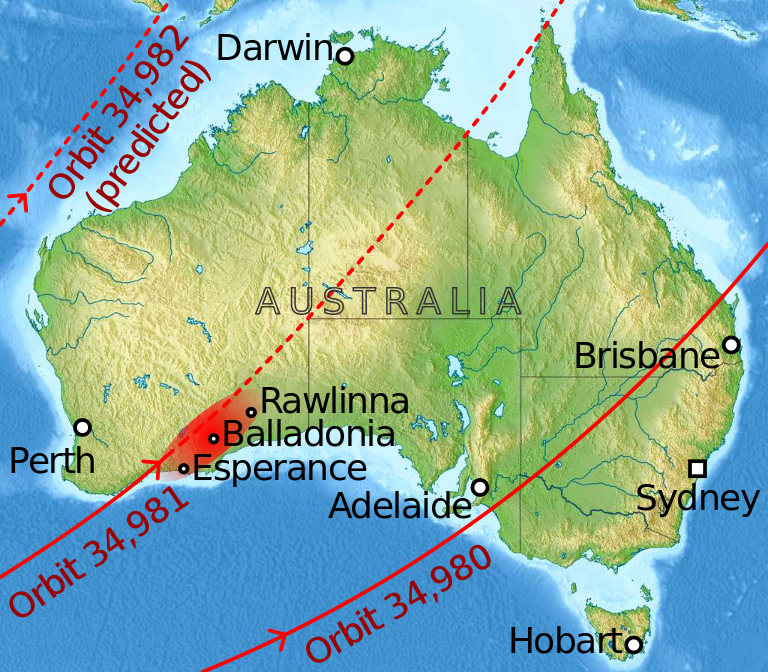
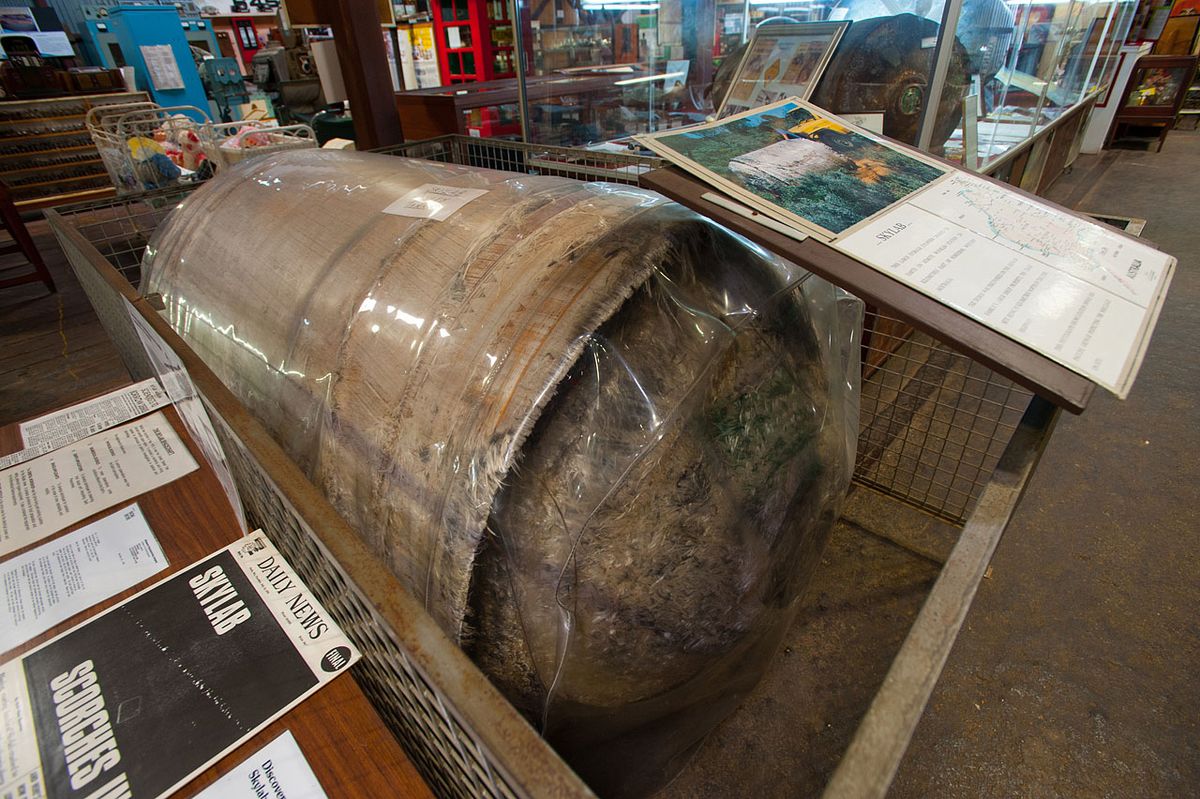
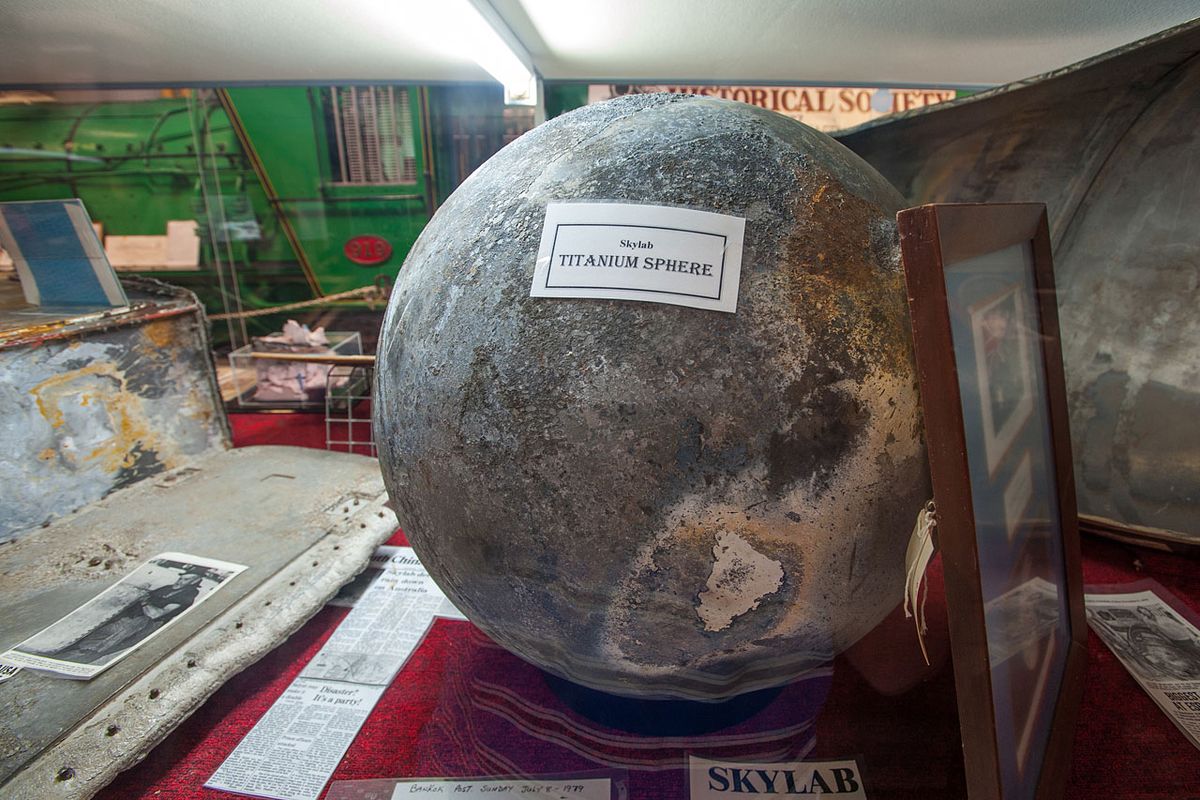
Left: Skylab’s entry path over Western Australia, showing sites that recovered debris from the station. Middle and right: The museum in Esperance, Western Australia, displays an oxygen tank and a titanium tank from Skylab. Image credits: courtesy Ben Cooper.

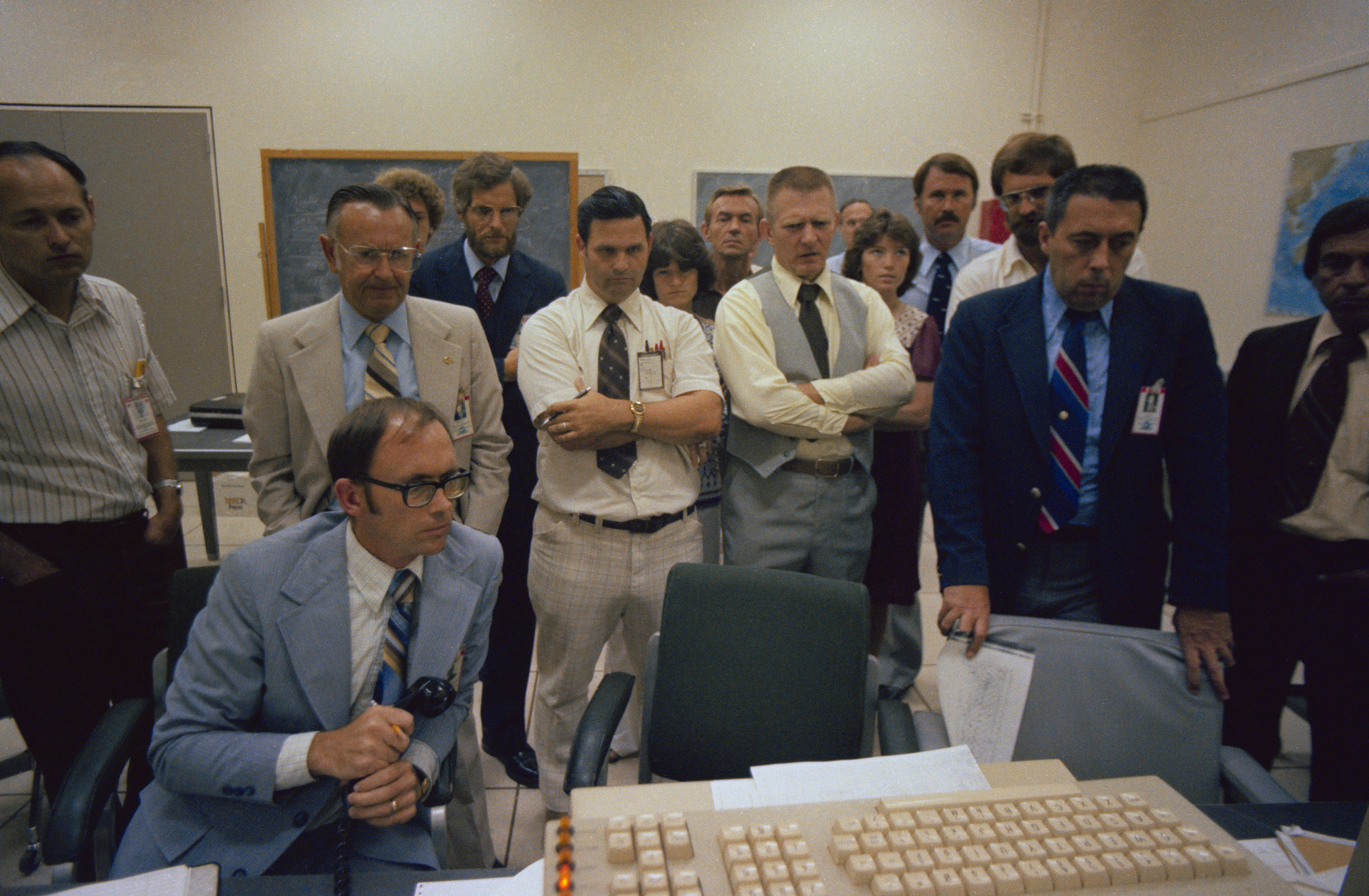
Left: Operators in Mission Control at NASA’s Johnson Space Center in Houston during the Skylab reentry. Right: Managers and flight controllers monitor Skylab’s reentry.
Tracking at the Bermuda station indicated Skylab’s large solar array still attached to the workshop. Controllers at Ascension Island in the South Atlantic made contact with Skylab as it flew 66 miles overhead, its large solar array beginning to detach from the workshop, itself already heating from the reentry. Once the disintegrating station passed out of range of Ascension, it continued its reentry unmonitored. Skylab finally broke apart at an altitude of 10 miles, slightly lower than expected, moving the impact footprint further east than planned. Pieces of Skylab falling on Western Australia created sonic booms heard by the inhabitants of the few towns in the Outback. The actual documented debris footprint stretched 2,450 miles. A museum in Esperance houses some of the recovered debris. Skylab Flight Director Charles S. Harlan said in a news conference after the event, “The surprise is over. No more suspense. Skylab is on the planet Earth.”
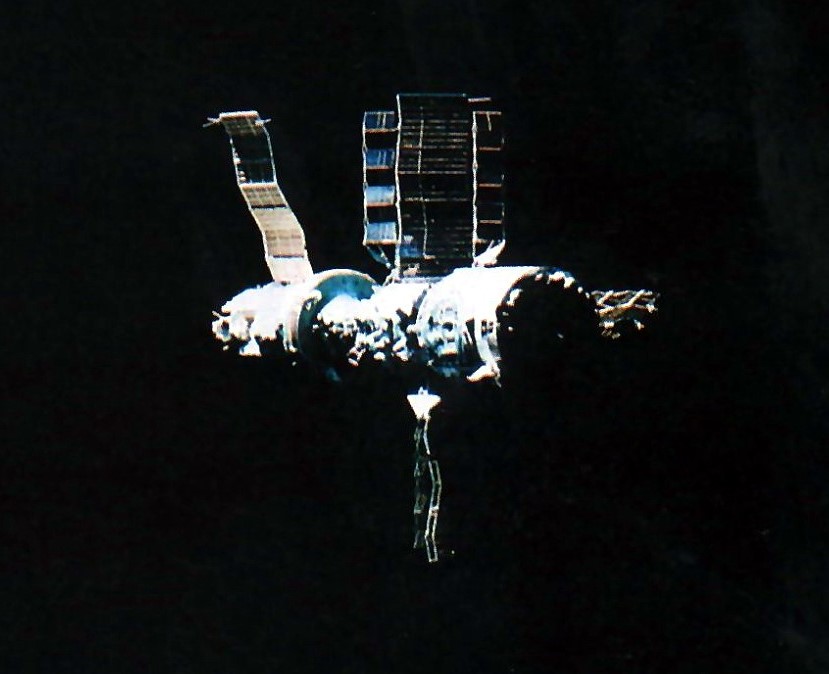


Left: The Salyut 7-Kosmos 1686 complex photographed by the last departing crew. Middle: Reentry trajectory of the Salyut 7-Kosmos 1686 complex. Image credit: courtesy H. Klinkrad. Right: A piece of Salyut 7 recovered in Argentina. Image credit: courtesy Carlos Zelayeta.
In contrast to the partially controlled Skylab entry, the Salyut 7-Kosmos 1686 complex made an uncontrolled reentry over Argentina on Feb. 7, 1991. At 88,491 pounds, the complex had about half the mass of Skylab. Although controllers had sent all previous Salyut stations on controlled reentries into the Pacific Ocean, they lost communications with Salyut 7 more than two years before its reentry. A crew last occupied the Salyut 7-Kosmos 1686 complex in June 1986. In August 1986, engines on the Kosmos 1686 module raised the complex’s orbit by 84 miles to 295 miles, with an anticipated reentry in 1994. Like Skylab, controllers considered a possible retrieval of Salyut 7 by a Buran space shuttle before that program’s cancellation. The last communications with Salyut 7 occurred in December 1989. Again, like Skylab, higher than anticipated solar activity in the late 1980s accelerated its descent. The station initially entered a gravity gradient attitude with the heavier Kosmos 1686 facing the Earth, but that attitude degraded significantly as the station encountered denser atmosphere in January 1991. And although said to be uncontrollable, apparently on Feb. 5, ground teams commanded it into a head on attitude to reduce drag and direct entry to an orbit that overflew less populated areas. Fuel depletion did not allow completion of the maneuver and atmospheric drag torqued the vehicle away from this attitude. Although planned for reentry over the south Pacific Ocean, Salyut 7 overshot the target and came down over Argentina, with a few fragments recovered.
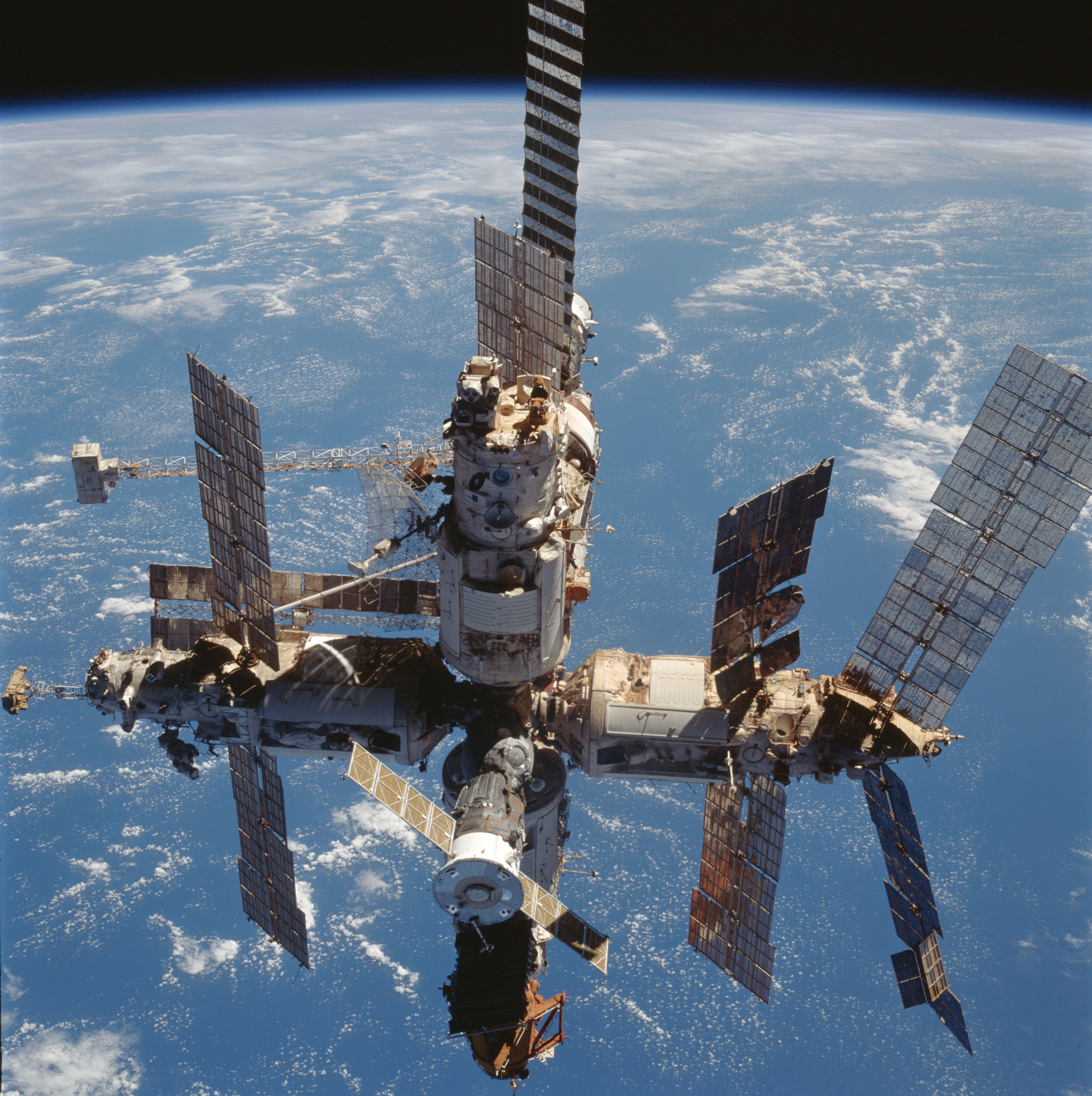
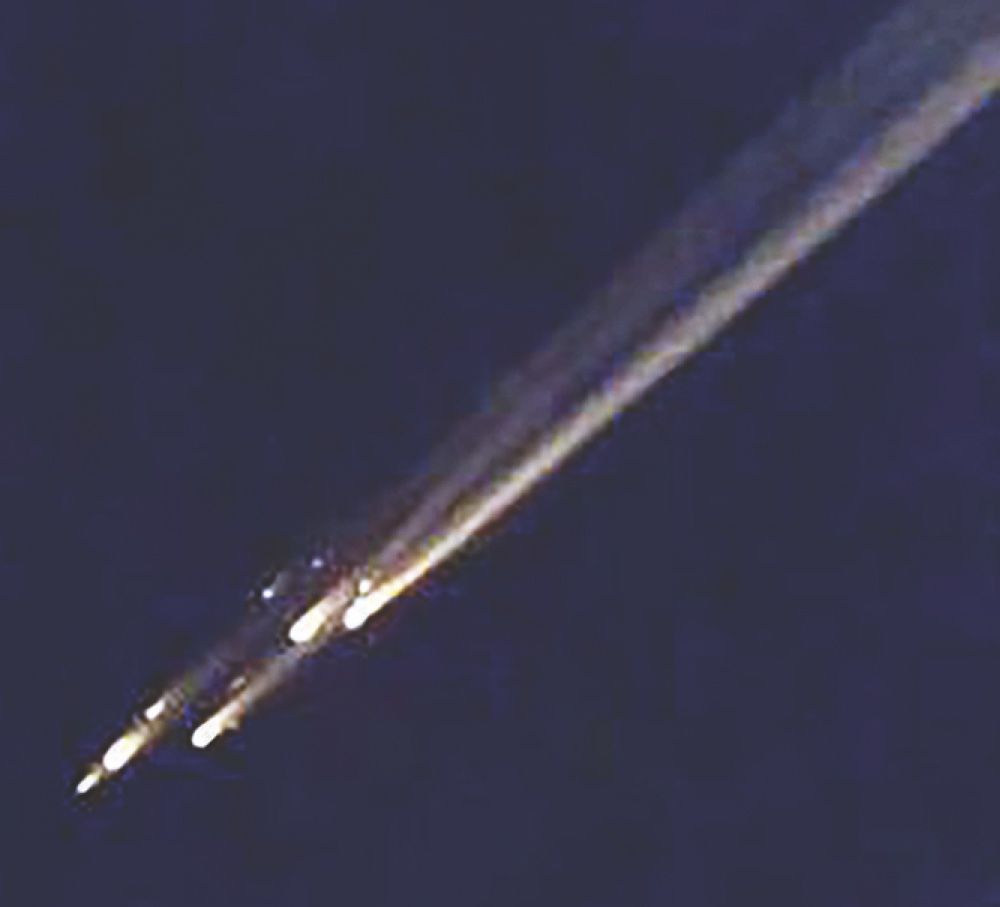
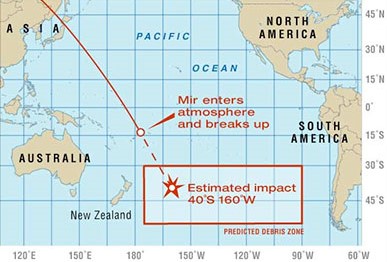
Left: The Mir complex in 1998. Middle: The March 2001 reentry of Mir photographed from Fiji. Right: The reentry trajectory of Mir in March 2001.
Lessons learned from the earlier reentries of large space stations led controllers to devise a three-stage process to deorbit the Mir space station in a controlled fashion into the Pacific Ocean in March 2001. In the first stage, controllers allowed orbital drag to bring the 285,940-pound station, at the time the heaviest object to reenter, down to an average altitude of 140 miles. For the second stage, on March 23, the docked Progress M1-5 fired its engines twice to lower Mir’s orbit to 103 by 137 miles. Two orbits later, the Progress fired its engines for 22 minutes to bring Mir out of orbit. It burned up on reentry over the South Pacific Ocean, with observers in Nadi, Fiji, watching its final moments.
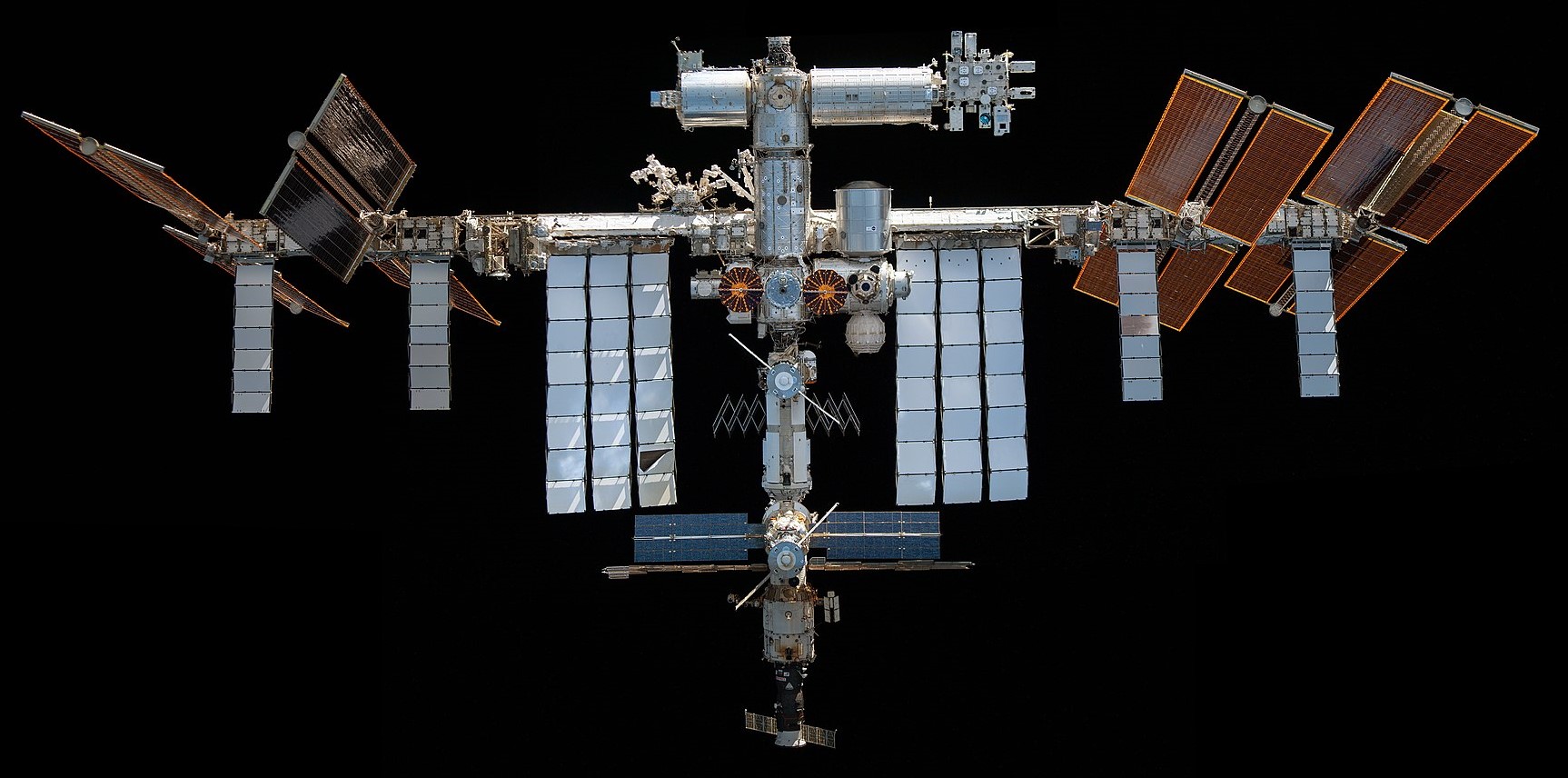
The International Space Station, the largest spacecraft in orbit.
In anticipation of the eventual controlled disposal of the International Space Station, on June 26, 2024, NASA selected SpaceX to develop and deliver the U.S. Deorbit Vehicle. The vehicle will safely deorbit the space station, the largest and, at over 900,000 pounds, by far the heaviest spacecraft in orbit, after the end of its operational life, currently expected in 2030. Past experiences can provide useful lessons learned.

